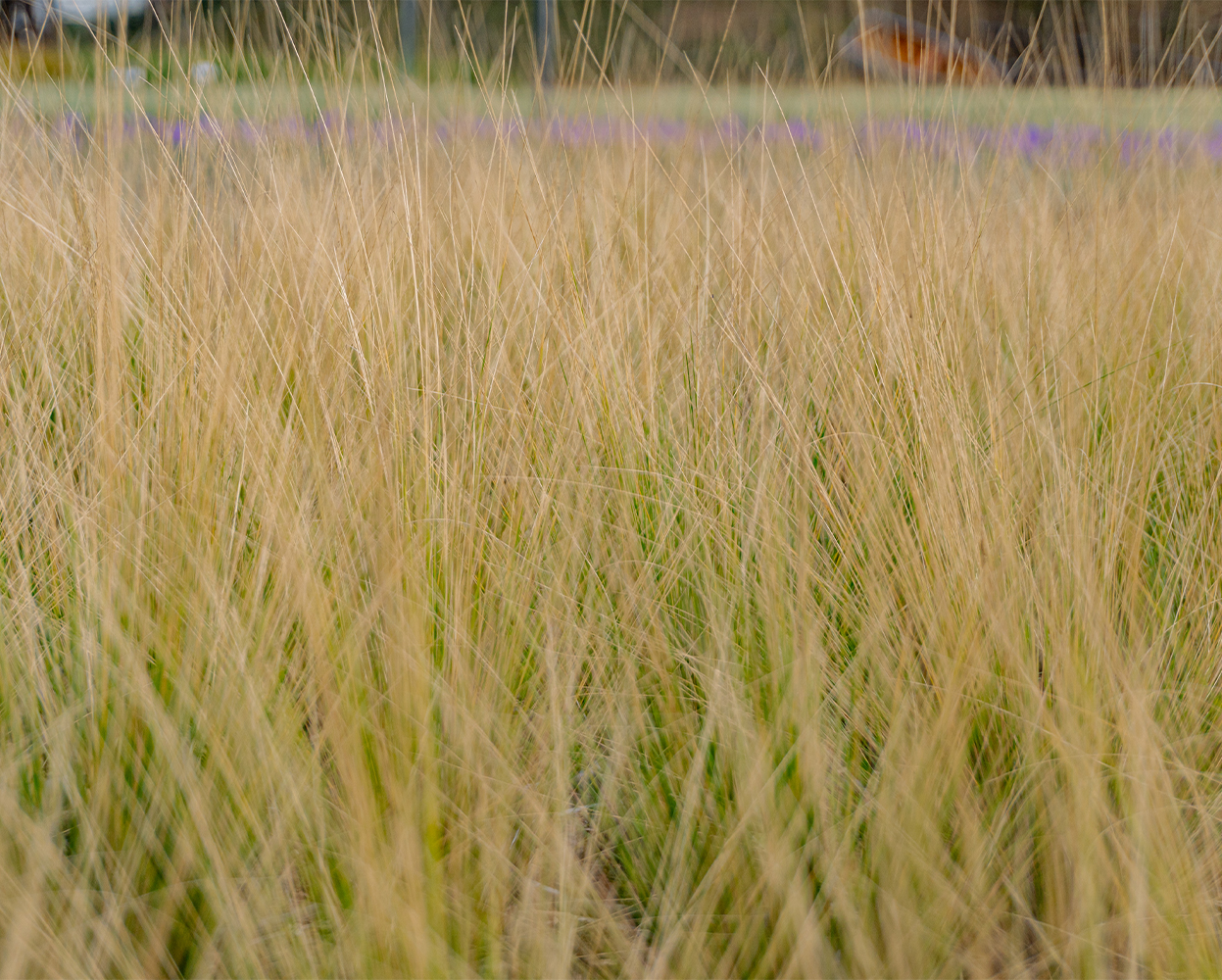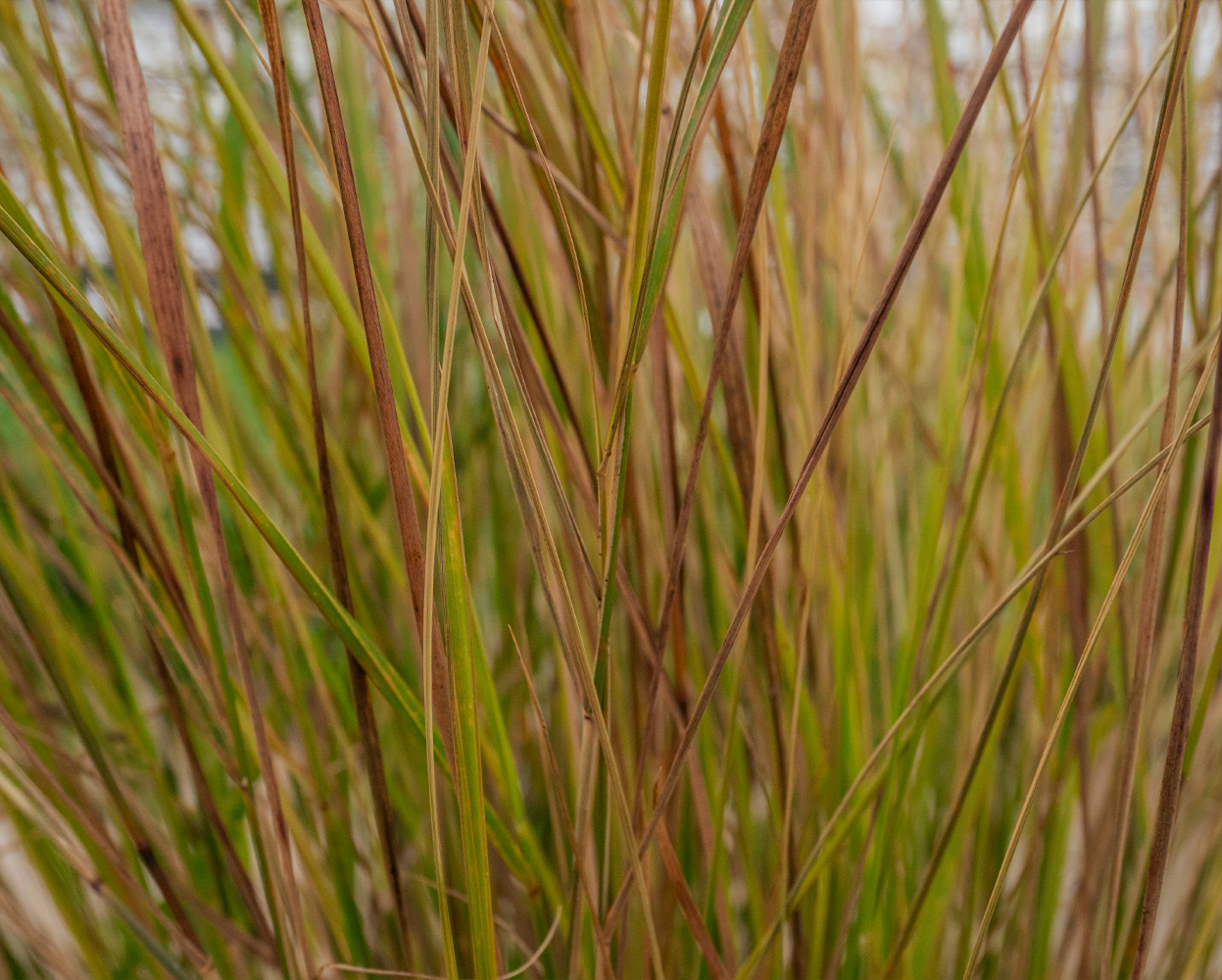Plant Focus: Stipa
Delicate ornamental grasses that provide movement and texture
The Stipa genus, part of the grass family (Poaceae), is made up of over 300 species found across Europe, Asia, and the Americas. Its name comes from the Greek word styppe, meaning “tow” or coarse fibre, a reference to the wiry texture of some species’ leaves and seed awns. These grasses have adapted to a wide range of habitats, from open prairies and steppe regions to rocky hillsides, where their fine foliage and seedheads move effortlessly with the wind. Historically, Stipa has been valued not just for its beauty but also for its resilience. In some parts of the world, they were used for grazing, weaving, and even thatching. Its common name, feather grass or needle grass, reflects the delicate, feathery plumes that define many of its varieties.
In the UK today, Stipa is most often used as an ornamental grass, chosen for the texture and movement it brings to planting schemes. It has become a key plant in naturalistic and prairie-style landscapes, where its light, airy forms create contrast with sturdier perennials and shrubs. Stipa is equally at home softening the edges of paths and borders, or standing as a feature in gravel gardens and contemporary urban spaces. Its ability to provide interest throughout the seasons makes it a versatile and sustainable choice for commercial landscaping projects.
Key Characteristics:
✓ Perennial ornamental grass
✓ Narrow, arching leaves forming graceful clumps
✓ Feathery, floating seedheads that move in the wind
✓ Height varies from 30 cm to 2 m depending on species
✓ Thrives in full sun and free-draining soil
✓ Drought-tolerant once established
✓ Provides year-round texture, especially in winter
✓ Popular in prairie and naturalistic planting schemes
Did you know?
The dramatic seedheads of some Stipa species are so lightweight and feathery that they can travel long distances on the wind, helping the plant spread across open landscapes.
Popular Stipa Species we recommend:

Stipa tenuissima

Stipa arundinacea
Stipa tenuissima
A compact grass with fine, hair-like foliage that creates soft clumps. In summer, pale golden seedheads rise above the leaves, moving freely in the wind. It grows to around 60cm and is suited to gravel gardens, borders, or naturalistic planting schemes.
Stipa gigantea
One of the tallest species, forming large clumps of evergreen foliage. Upright stems reach up to 2.5m and produce oat-like golden flowerheads in summer, which remain standing well into autumn. Often used as a focal point or backdrop in planting schemes.
Stipa arundinacea (syn. Anemanthele lessoniana)
An evergreen grass with arching foliage that changes colour through the seasons, from green to orange, red, and bronze. Loose flowerheads appear in summer, adding further movement. Provides colour year-round and grows well in borders or on slopes.
Stipa calamagrostis
Forms dense clumps of narrow green leaves. Tall, upright stems carry silky, feathery panicles from early summer. It grows to about 1m in height and is commonly used in prairie-style planting or for adding vertical interest to borders.
Stipa barbata
Noted for its long, silky awns that twist and catch the light. Upright stems carry decorative plumes above fine foliage, giving a distinctive appearance. Prefers sunny, well-drained sites and works well in gravel or Mediterranean-style gardens.
Stipa tenacissima
A tough, drought-tolerant species forming large tussocks of stiff, narrow leaves. Native to the western Mediterranean, where it has traditionally been used for making rope and mats. Thrives in dry, sandy soils and adds structure to planting schemes.
How to Grow and Care for Stipa
Growing Stipa is relatively straightforward, making it a valuable choice for both professional landscapers and home gardeners. These grasses thrive in full sun and require free-draining soils, often performing best in conditions that might challenge other plants, such as sandy or gravelly soils. Once established, they are highly drought-tolerant, reducing the need for irrigation and making them a sustainable choice for water-wise planting schemes.
Maintenance is minimal. In spring, old or dead foliage can be removed by gently combing through the clump with fingers or a rake, rather than cutting back hard. This tidying encourages fresh new growth and prevents the clumps from becoming matted. Dividing older plants every few years can rejuvenate growth and maintain vigour, especially for species that become congested over time.
Stipa grasses are excellent for naturalistic planting, where their movement and softness complement flowering perennials. They work equally well in contemporary landscapes, where their fine textures can offset strong architectural forms. Even in winter, when flowers have faded, their seedheads still remain, catching frost and low winter sun to extend the season of interest.
Pests and Diseases
Stipa is generally free from pests and diseases, a quality that makes it especially valuable for low-maintenance planting schemes. Its main vulnerability lies in soils that are too wet, which can cause roots to rot. For this reason, ensuring sharp drainage is essential, particularly in heavy clay soils where adding grit can help. Occasionally, clumps may thin out with age; dividing and replanting will restore density. Beyond this, Stipa is remarkably robust and reliable, making it one of the easiest ornamental grasses to grow.
If you would like to learn more about the varieties of Stipa grass we grow and sell, speak to the G Team today.

